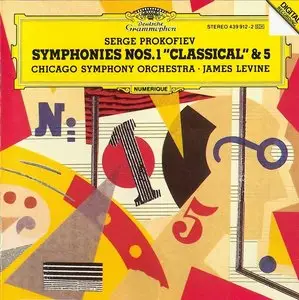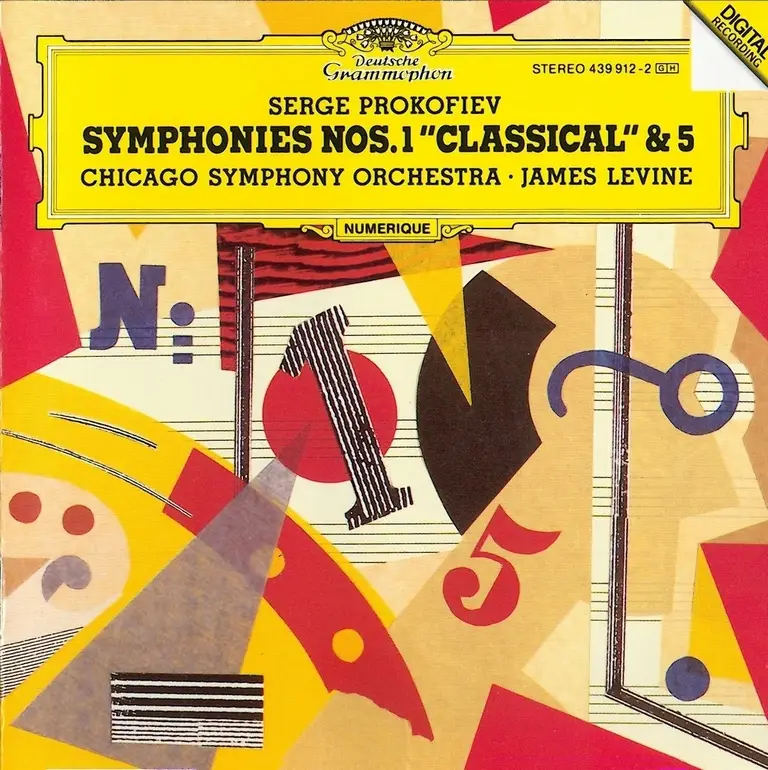Chicago Symphony Orchestra · James Levine
As ever, Levine's musical credentials are impeccable. The required elements are all duly in place, his choices sound, his ear alert. In Symphony No. 1 the counterpoint is alive and kicking, inner detail tantalizingly clear. But it's featureless. Where is the spirit of delight in this 'classical' encounter? Where is the human contact? The first movement is charmless, ungainly, the development too big for its boots. It's a cold, marmoreal beauty that the Larghetto projects, the Gavotte weighs in too earnestly, and even that chortling finale where at last the performance begins to thaw and dance is somehow too insistent. Music-making by decree.
The Fifth is again a highly professional job. What is it saying? Is there a subtext here? Or are these wartime heroics entirely gestural? Levine certainly homes in on the dark side of the symphony's nature. His first movement is forceful, single-minded, a strictly in-tempo view where even Prokofiev's fidgety animations are unbending without irony or curiosity. Indeed, the expression is so generalized that these big, imposing, implacable sonorities fail to mean anything: a sense of detachment prevails. The great ice-breaking climax is upon you before you know it; don't ask where it came from, or why it carries no emotional frisson in its wake. It's loud, isn't that enough? No it isn't. Levine even manages to undermine that mighty three chord pay-off in the coda, allowing his Chicago brass much too much, too soon.
I spoke of irony just now. But Levine all but drives it from the face of the Scherzo. That Cadillac of a Trio is not allowed so much as a shrug of pleasure, a knowing wink of defiance. It's the decadence that eludes Levine: he has got his foot down on the power, the characterization passes him by. And maybe, just maybe, we're starting to take for granted the potency of those outreaching violin entreaties in the slow movement. A great orchestra like this should engage us every time. But somewhere along the line, Levine has failed to re-motivate them. There is one special moment, and it stands out because the spirit so evidently moves. That's the star-dusted coda of the movement where a hint of wistful portamento in the violins and the re-emergence of a pale and interesting clarinet suddenly takes us into another realm.
From there, it's plain sailing. The finale is given its head, Levine duly pointing up, spiking, its excitable exclamations. The Heath Robinson coda is a terrific racket of mechanization, the Red Army blasting us to that industrial revolution in the sky But it isn't in any sense the culmination of an out standing performance. I'm not enticed to go back for more. Now Slatkin and Tilson Thomas insist that you do.' Reviewed: Gramophone 1/1995, Edward Seckerson
CD
Symphony No. 1 'Classical' Op.25
Symphony No. 5 Op.100



